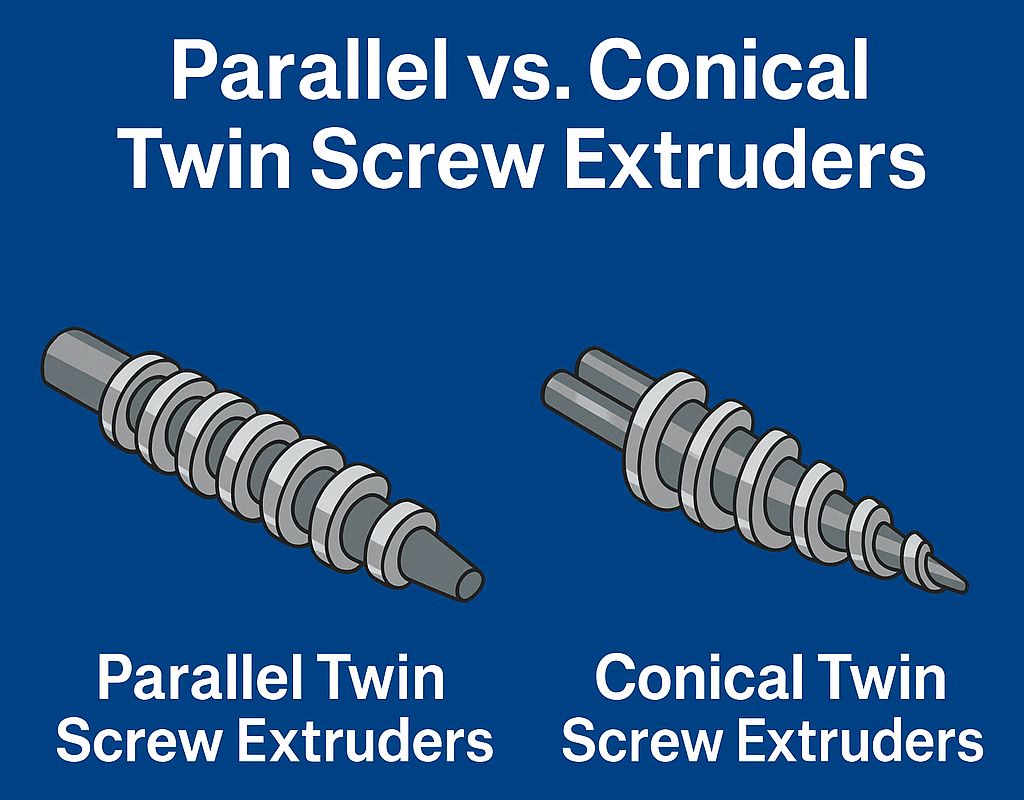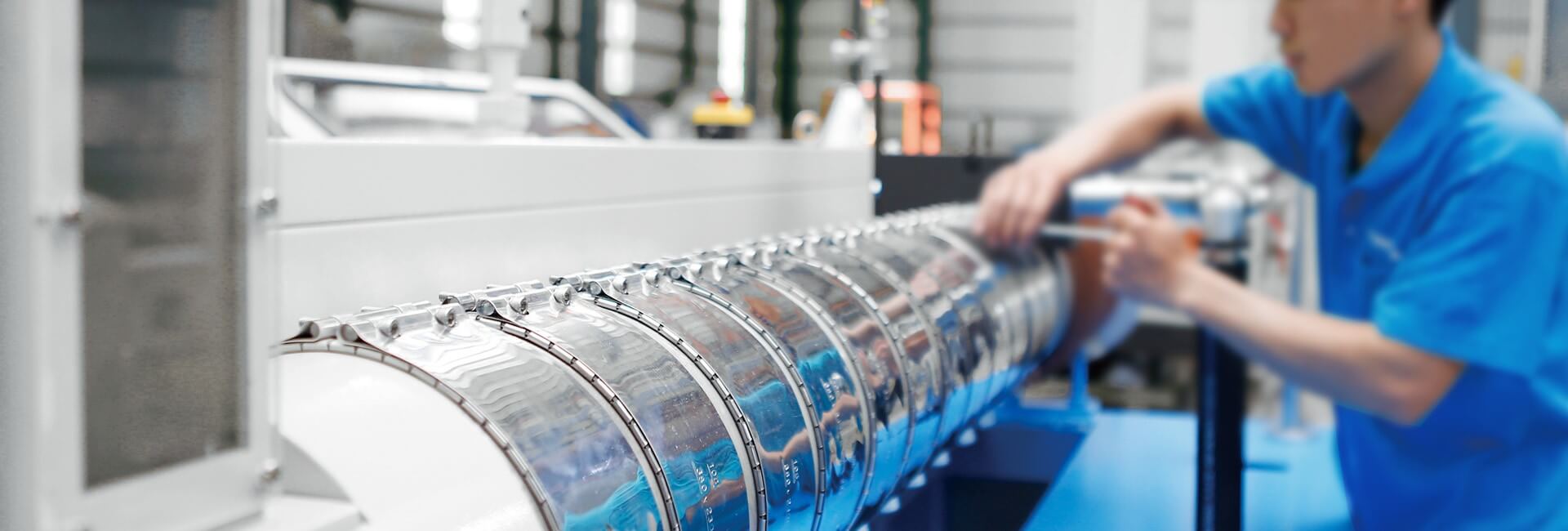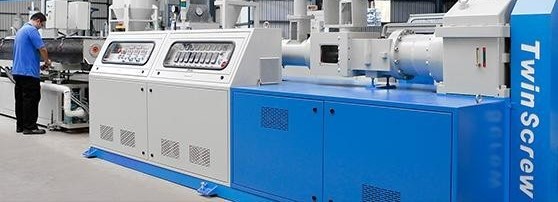7 Must-Know Types of Twin Screw Extruders : Your Guide to Design, Benefits, and Applications
- Inside the Twin Screw Extruder : How It Works and Why It Matters
- Decoding the Different Types : From Intermeshing to Non-Intermeshing Designs
- From Feed to Finish : Unveiling the Twin Screw Extruder Process
- Head-to-Head : Technical Comparisons and Key Considerations
- Real-World Impact : How Twin Screw Extruders Transform Industries
- Maximize Performance : Essential Maintenance & Best Practices
- Case Studies : Customized Twin Screw Extruder Solutions
- A Brief Introduction to Our Twin Screw Extruder Offerings
- The Future of Twin Screw Extruder Technology
Twin screw extruders have become a cornerstone in modern plastics processing due to their versatile design and exceptional performance in compounding, mixing, and homogenizing materials. In this comprehensive guide, we explore the various types of twin screw extruders, explain their working principles, and provide technical comparisons to help decision-makers in the plastics industry make informed choices.
.jpg)
Inside the Twin Screw Extruder : How It Works and Why It Matters
At its core, a twin screw extruder is a high-performance machine that employs two intermeshing screws housed within a barrel. Depending on the design, these screws can operate as co-rotating or counter-rotating systems and can be arranged in either parallel or conical configurations. Key technical elements include :
- Gearbox and Reducer Systems : These components ensure optimal rotation speeds and efficient torque distribution.
- Intermeshing Design : Essential for effective material conveying and thorough mixing.
- Screw Geometry : Variations, such as conical versus parallel designs, directly influence residence time, shear rate, and overall product quality.
Decoding the Different Types : From Intermeshing to Non-Intermeshing Designs
Twin screw extruders are classified based on screw interaction, rotation direction, and geometric design.
1. Intermeshing vs. Non-Intermeshing Designs
-
Intermeshing Twin Screw Extruders :
- Fully Intermeshing : The distance between screw axes is shorter than the sum of their outer radii, resulting in tightly engaged screws that maximize mixing.
- Partially Intermeshing : A small clearance exists between the screw flights, influencing mixing intensity and facilitating self-cleaning.
-
Non-Intermeshing Twin Screw Extruders :
In these systems, the distance between the screw axes equals or exceeds the sum of their outer radii, allowing the screws to operate more independently. This configuration enhances material exchange while providing a gentler processing environment.
2. Co-Rotating vs. Counter-Rotating Twin Screw Extruders
-
Co-Rotating Extruders :
Both screws rotate in the same direction. This setup delivers high mixing efficiency, ideal for intensive compounding and dispersive mixing. The intermeshing area typically creates a spiral l (“∞”-shaped) flow that promotes uniform material distribution. -
Counter-Rotating Extruders :
With screws rotating in opposite directions, this configuration generates stronger shear forces, making it well-suited for high-pressure applications and processing high-viscosity or heat-sensitive materials.
3. Parallel vs. Conical Twin Screw Extruders
-
Parallel Twin Screw Extruders :
These extruders feature two screws arranged in parallel, maintaining a consistent diameter along their entire length. This design is engineered for high stability and uniform shear distribution, making it ideal for continuous production processes. Applications often include the manufacturing of profiles, pipes, and other extruded products that require extended residence time and precise dimensional consistency. -
Conical Twin Screw Extruders :
Characterized by a tapered screw profile—from a larger diameter at the feed end to a smaller one at the discharge end—conical twin screw extruders create a natural compression zone. This geometric transition enhances melting, improves mixing performance, and facilitates efficient material conveyance. Their compact design and high torque transmission capability make them well-suited for medium-capacity extrusion lines.

From Feed to Finish : Unveiling the Twin Screw Extruder Process
The operation of a twin screw extruder involves several key stages :
-
Feeding :
Raw materials—such as pellets, powders, or granules—are introduced through a hopper into the extruder. -
Conveying and Melting :
The intermeshing screws convey and compress the material along the barrel. As the material is heated in controlled zones, it melts and becomes homogenized. -
Mixing and Homogenization :
The design of the screw elements—whether intermeshing or non-intermeshing, co-rotating or counter-rotating—ensures thorough mixing. Depending on the configuration, the material may follow a spiral (“∞”-shaped) or C-shaped flow path, as illustrated in detailed diagrams. -
Shaping and Cooling :
Once homogenized, the material is forced through a die to form the desired shape, then cooled and further processed as required.
Head-to-Head : Technical Comparisons and Key Considerations
Understanding the differences between extruder types is crucial. Consider the following comparison :
| Feature | Intermeshing Co-Rotating | Intermeshing Counter-Rotating | Non-Intermeshing |
|---|---|---|---|
| Screw Interaction | Tightly engaged for maximum mixing efficiency | Strong shear forces with enhanced material conveying | Independent operation enhances material exchange |
| Mixing Efficiency | Excellent for compounding and masterbatch production | Suitable for high-pressure, gentle processing of heat-sensitive materials | Lower shear forces, ideal for controlled reactive extrusion |
| Material Flow | Spiral “∞”-shaped flow ensures uniform mixing | C-shaped flow chamber facilitates positive displacement | Relies more on friction-based conveying |
| Geometric Impact | Modular and adaptable design | Customizable gap adjustments optimize shear and mixing | Best for applications requiring gentle handling |

Real-World Impact : How Twin Screw Extruders Transform Industries
Twin screw extruders are pivotal in various industrial processes, including :
-
Plastic Processing :
Perfect for producing PVC profiles, pipes, Ceiling Panel, and films with consistent quality. -
Compounding and Masterbatch Production :
Their high mixing efficiency makes them ideal for uniformly incorporating fillers, pigments, and additives into polymers. -
Reactive Extrusion :
They facilitate in-line chemical reactions with precise control over temperature, residence time, and shear. -
Research and Laboratory Applications :
Smaller, benchtop extruders enable pilot studies and R&D in food processing, material testing, and beyond. -
PVC Pelletizing Extrusion Lines :
Twin screw extruders also play a crucial role in PVC Pelletizing Extrusion Lines, efficiently converting PVC resin into high-quality pellets used as feedstock in downstream processing.
Read more : Application of Twin Screw Extruder and Extrusion Line

Maximize Performance : Essential Maintenance & Best Practices
To ensure optimal performance, follow these maintenance tips:
- Routine Inspections : Regularly check extruder screws and barrels, and gearboxes for signs of wear or misalignment.
- Lubrication and Cleaning : Keep all moving parts well-lubricated and free of debris.
- Process Monitoring : Utilize integrated sensors to track temperature, pressure, and motor performance, ensuring consistent quality throughout the extrusion process.
Case Studies : Customized Twin Screw Extruder Solutions
Our extensive experience spans multiple industries, and we take pride in delivering tailored solutions that address unique production challenges. Below are two case studies showcasing our proven expertise :
Medical Tube Extrusion Excellence
In the high-stakes realm of medical manufacturing, precision, efficiency, and reliability are paramount. In one notable project, a prominent European medical supplies company faced a surge in demand for PVC medical tubing used in IV lines, catheters, and respiratory tubes. We customized a twin screw extruder solution that :
- Enhanced Precision : Advanced process controls maintained strict dimensional tolerances.
- Boosted Production Efficiency : Tailored adjustments to screw design and process parameters significantly increased throughput without sacrificing quality.
- Streamlined the Process : Integrated sterilization stages reduced both time and costs, ensuring rapid delivery of ready-to-use products.

Empowering New Entrants with Turnkey Solutions
Another success story involved a newcomer in the medical tube sector. Facing challenges with production capacity, setup, and future scalability, we provided a comprehensive, customized solution that included :
- In-Depth Consultation : A thorough analysis of production requirements and process optimization strategies.
- Customized Equipment Design : A tailored twin screw extruder configuration to meet specific material and quality standards.
- End-to-End Support : Comprehensive assistance—from factory setup to process control training—ensured a smooth production launch.
These case studies highlight our commitment to innovation and our ability to tailor twin screw extruder solutions to diverse industry needs.

A Brief Introduction to Our Twin Screw Extruder Offerings
In addition to providing comprehensive educational content on twin screw extruder technology, we are proud to offer innovative solutions backed by decades of research and development. Our offerings are designed to :
-
Maximize Mixing and Compounding Efficiency :
Featuring precisely engineered screw elements and modular configurations to ensure uniform material distribution and high product quality. -
Enhance Operational Flexibility :
Available in configurations ranging from lab-scale benchtop units to full-scale industrial machines, our solutions meet diverse production requirements. -
Support Process Optimization :
Equipped with advanced control systems for real-time monitoring and adjustments, our extruders maintain optimal performance and energy efficiency. -
Adapt to Market Demands :
With a strong focus on continuous improvement, our twin screw extruder solutions are built to evolve with emerging industry trends and changing market needs.
The twin screw extruder is engineered for high performance and versatility in polymer processing. It delivers a high specific output while ensuring outstanding melt homogeneity for superior product quality. Its maintenance-free, closed screw temperature control system provides stable and precise processing conditions, and the integrated metering and stuffing device expands the machine's processing range. Additionally, the low screw speed minimizes wear, while a longer screw and barrel design ensures gentle plasticizing, preserving the integrity of the material throughout the extrusion process.
The Future of Twin Screw Extruder Technology
Twin screw extruders represent a sophisticated blend of advanced design, robust engineering, and operational efficiency. Their diverse configurations—from intermeshing co-rotating to counter-rotating, and from parallel to conical designs—enable them to serve a wide range of applications in the plastics, chemical, and food industries. By understanding the technical nuances and best practices, decision-makers can optimize production processes and consistently achieve high-quality outcomes.
This guide has been crafted to educate and inform, addressing both fundamental and advanced aspects of twin screw extruder technology. Whether you are exploring new equipment for large-scale production or seeking a lab-scale solution for R&D, the right twin screw extruder can transform your processing operations. For further insights or tailored technical advice, do not hesitate to consult with our industry experts.
Related Articles




